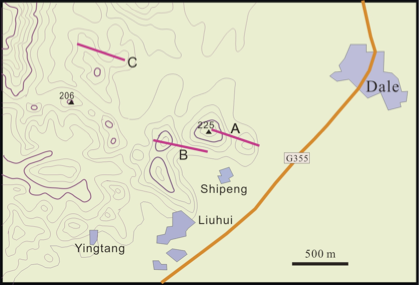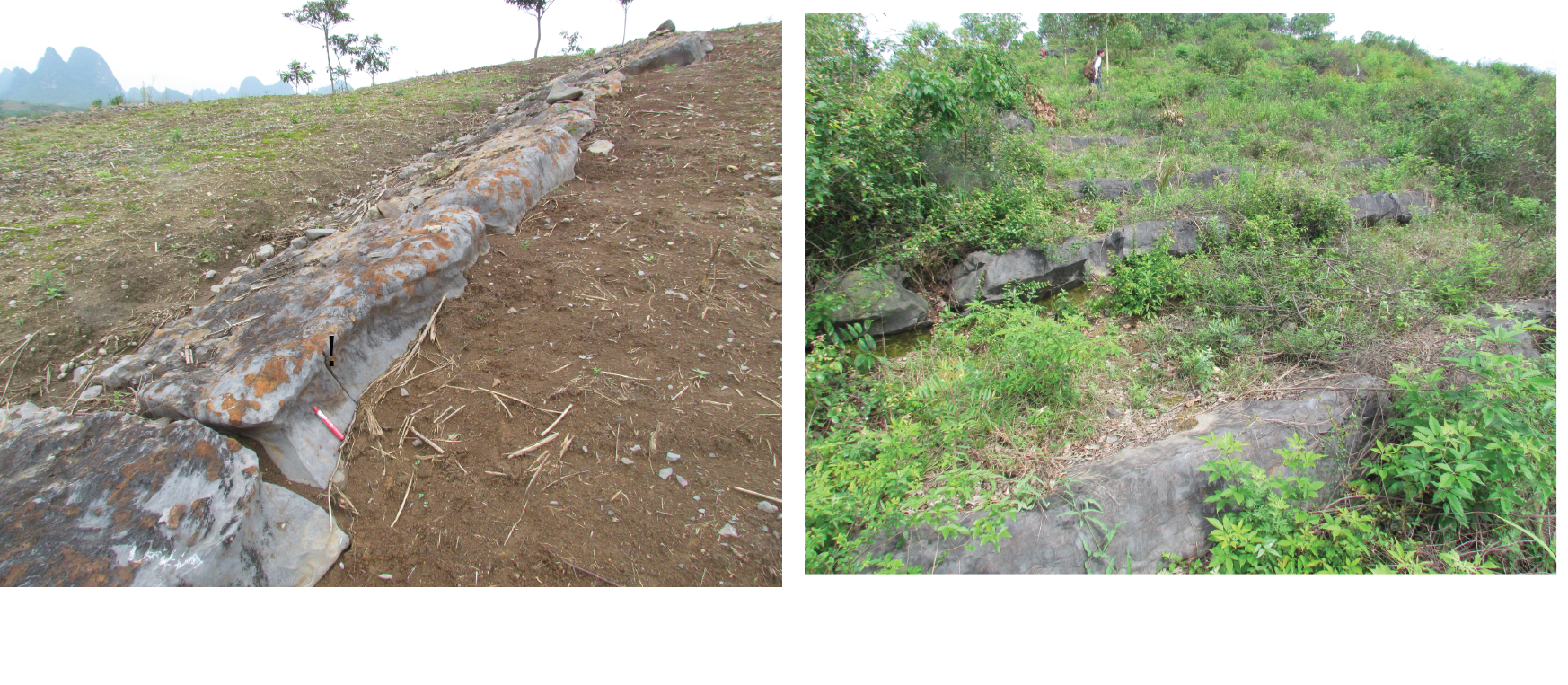Dale Fm
Type Locality and Naming
The type section is located at Dingshan Hill (109°58'E, 24°03'N), southwest of Dale Township, Xiangzhou County, Guangxi. It was named by Jia Huizhen and Yang Deli in 1979.
[Figure Locations of Dale Fm (A, B) and Gupa Fm and Guche Fm (C) in Dale area]
Lithology and Thickness
Limestone. The Dale Formation is mainly a set of medium-thick bedded bioclastic limestone with clayey limestone. It was subdivided into three members by Hou H. F. & Xian S.Y. (1975) mainly on the basis of fossil contents. Lower - Shipeng Member, consists of dark-gray bioclastic limestone intercalated with clayey limestone, and dolomitic limestone, 179 m thick. Middle - Liuhui Member, 206.7 m thick, is composed of alternation of bioclastic and micritic limestone, clayey limestone with dolomitic limestone, lamainated limestone, stromatoporoid limestone and small bioherm. Some fenestral and boring structures are observed. Upper – Dingshanling Member, 92.4 m thick, is dominated by thin-bedded dark gray clayey limestone.
[Figure Outcrops of Dale Formation showing the bioclastic limestone with very large-sized ostracod Paramoelleritia xiangzhouensis Wang at the basal Shipeng Member (right) and the clayey limestone (cultivated land) intercalated with dolostone of Liuhui Member (left).]
Relationships and Distribution
Lower contact
The basal formation with a bed of dolomitic limestone bearing large-sized ostracod fossils rests conformably on the underlying Guanqiao Fm Dolomite.
Upper contact
It is conformable contact with overlying Gupa Fm..
Regional extent
This formation is distributed along both sides of Dayaoshan Mt. Mud content commonly increases from south to north, until the upper part of the Dale Fm totally changes into shale at Sipai. Southwards the formation thins and contains interbeds of dolomite.
GeoJSON
Fossils
Brachiopods include three assemblage zones: Lower part: the Trigonospirifer trigonata-Athyrisina plicata assemblage zone. Middle part: the Otospirifer daleensis assemblage zone. Upper part the Euryspirifer paradoxus assemblage zone.
Corals can be recognized three assemblages, from bottom to up: the Lyrielasma guangxiense, the Trapezophyllum cystosum, and the Psydracophyllum irregulare, In addition, a number of Favosites spp., Meosofavosites sp. occur in the Liuhui Member. Conodonts Polygnathus perbonus, P. serotinus; and Dacryoconarid Nowakia praecusor have been reported. A very characteristic large ostracoda Paramoelleritia xiangzhouensis occurs in the basal formation.
Age
Depositional setting
It is interpreted as an open carbonate platform.
Additional Information

